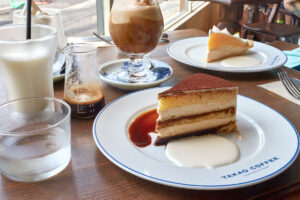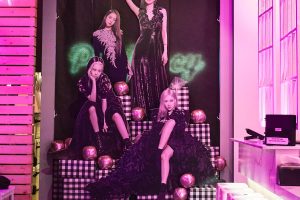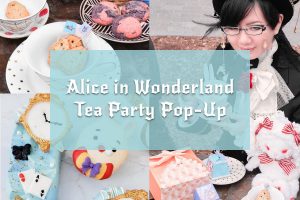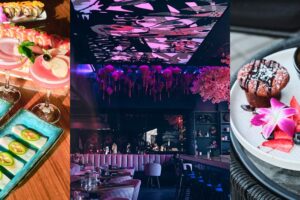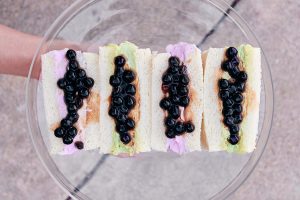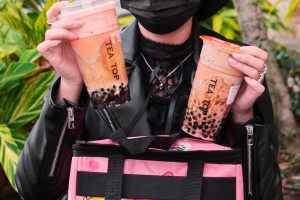Do you remember the 47 Jimoto Frappuccinos Explained post from June? I wrote this piece detailing all 47 different flavors and concepts behind Starbucks Japan’s 25th anniversary for a couple reasons. The first reason was simply self indulgence. I wanted to know what was in the Frappuccinos because I love limited edition menu items. The second reason was because I knew it would be a great vehicle for educating people about all of Japan’s prefectures.
A personal mission of mine is to encourage people to leave Tokyo. So many people come to visit Japan and only go to Tokyo, or at most Tokyo, Kyoto, and Osaka. I think this is a shame because 1) other areas of Japan has so much to offer for food, history, and art, and 2) Tokyo is overcrowded and kind of boring. These Frappuccinos show off all the different areas in Japan in interesting ways and hopefully encourage people to travel to more of these prefectures!
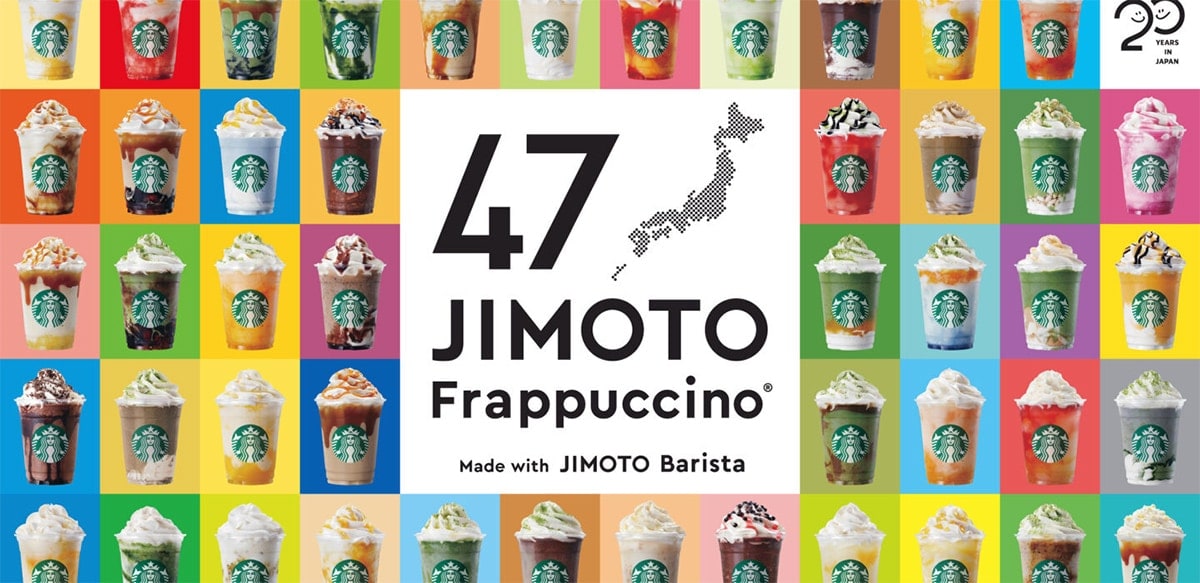
Drinking All 47 Jimoto Frappuccinos
Getting all 47 Jimoto Frappuccinos was an impossible task for anyone who was not incredibly wealthy, has an abundance of free time, and actively focus on buying them. This Frappuccino promotion ran from June 30, 2021 to August 3, 2021, a total of 35 days.
To accomplish drinking them all, you would have needed to drink about 1.4 Frappuccinos per day, meaning you would have need to visit approximately 1.4 prefectures per day. Strategic use of the Shinkansen bullet train would make this relatively easy to do; you just need well over 100,000 yen (~$900) to reach 37 prefectures, plus you would absolutely need to fly to the islands of Okinawa. All of them would require time and money that I do not have, so I immediately gave up on the idea of drinking all 47. That didn’t stop me from trying though. I decided I would try my best to drink as many as I could with my limited budget, resources, and time off work.
16 out of 47 Prefecture Drinks
I dreamt about these Frapps. I spent days planning my train routes and prioritizing certain Frappuccinos over others. To say I was overambitious is an understatement, but I managed to taste 16 different Jimoto Frappuccinos. I traveled to 16 prefectures in the span of one month.
While I was drinking them, friend on Instagram kept asking me for ratings in my stories so I have included them with my impressions. I tend to favor flavor and execution more than interesting concepts, so the scores tend to lean in that way. While I love a good concept but if it doesn’t taste good, there’s no point. I also know that I favored drinks with ingredients that comment on the local area.
1. Tokyo Coffee Jelly and Caramel Frappuccino
Tokyo’s Jimoto Frappuccino was extremely normal and uncontroversial, but in a way boring. The drink was coffee based with caramel and coffee jelly sinkers. The drink itself was excellent, undeniably tasty, just incredibly normal. As the drink was made to celebrate their first store opening in Ginza, a famous luxury shopping and business district in Tokyo. Ginza has countless old school Japanese coffee shops, so I appreciated the inclusion of coffee jelly in the drink as an ode to that history. Coffee jelly is a treat commonly found in Japanese coffee shops, but not so much in America. The coffee jelly was tasty and had a good texture, the caramel was rich, and the coffee drink was coffee. While this drink was not creative in anyway, shape, or form, it did represent Japanese coffee culture as a whole and was perfectly executed. I will give it a 9/10.
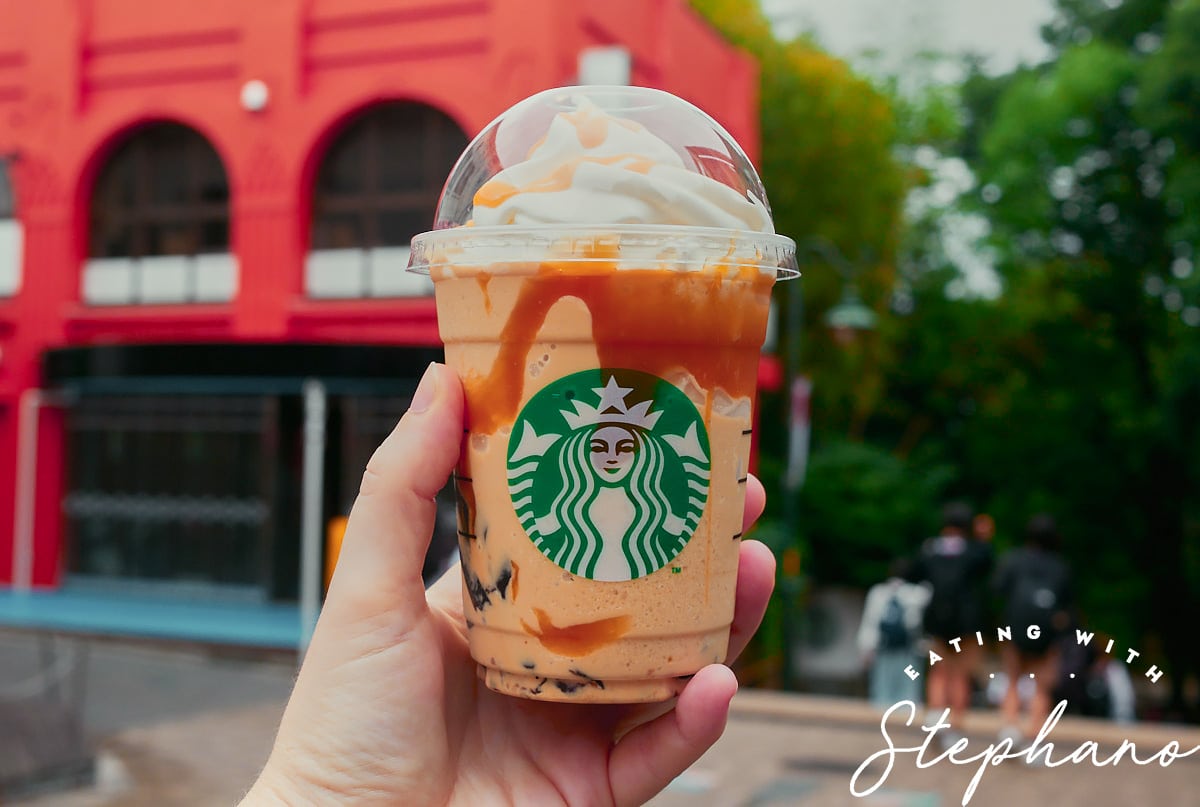
2. Saitama Strawberry and Citrus Frappuccino
Saitama’s drink was a bright citrus and strawberry drink Starbucks chose to symbolize the brightness of Saitama’s people and diversity of the prefecture. They also used strawberry to draw attention to Saitama’s famous spider lilies. To that end, I would say that the drink did have a variety of citrus. I could not really taste the strawberries, or any individual citrus. There was very little cream in this drink, so it tasted more like a citrus slushy topped with whipped cream and random cake decoration sprinkles. I lived in Saitama for 2 years and I had never heard of citrus or strawberries being associated with the prefecture, so the flavor profile selection was a little strange for me.
There is a famous city in Saitama called Kawagoe that has a famous candy road and is also noted for having sweet potatoes. I think that would have been a better fit. I appreciate that they did not use a cream base and the staff at the Starbucks I bought it from were extremely friendly and enthusiastic about the drink, but that could not make up for the lack of a solid foundation. Since the concept didn’t land right with me and the drink itself was kind of confusing, I will give it a 4/10.

3. Kanagawa Summer Blue Cream Frappuccino
For the Kanagawa Frappuccino, Starbucks recreated an iconic geographic feature of Kanagawa: the beautiful blue ocean and the warm sunshine. To do this, Starbucks used a butterfly pea peach tea to achieve a blue drink and then used a citrus sauce to create the sun rays. The flavor of the peach tea was very subtle. It was mainly just sweet with a flavor I couldn’t pin down until I looked it up. The citrus sauce was a simple concentrate with citrus peels. The peels gave the drink a nice texture and the citrus added flavor to the drink. I would say that while this drink was cute and I appreciated the concept behind it, but it did not deliver in the flavor department. I think 4/10 is fair.
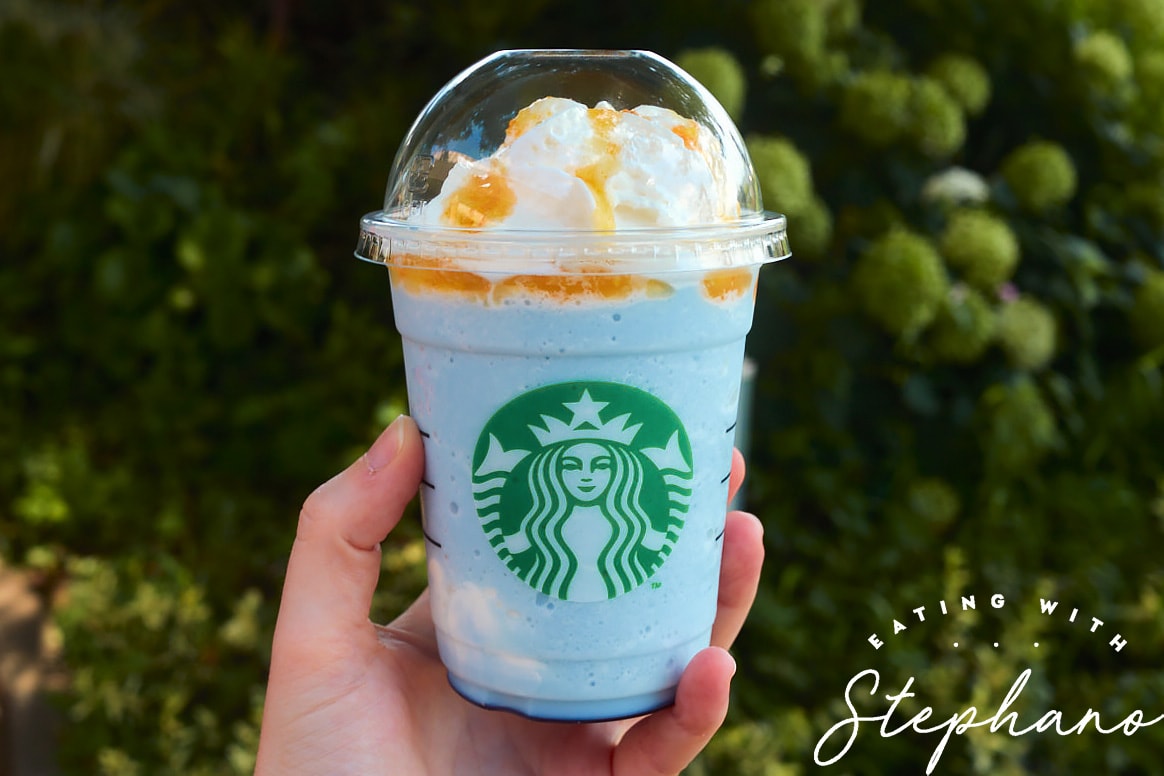
4. Nagano Apple Butter Caramel Frappuccino
I was lucky enough to enjoy this drink on a sunny day in the middle of Japan’s famous rainy season. At the location I went to in Karuizawa, the Starbucks was practically a Nagano Frappuccino factory. Tourists from near and far had come to try this drink, almost every person in front of me in my 10 minute wait ordered the limited Frappuccino. The Frappuccino itself was made with apple butter, cream, and caramel. The apple flavor was strong and sweet, but the caramel didn’t particularly stand out against it. I would have liked it more if the apple flavor had been more tart as opposed to sweet and if the caramel had been richer and maybe had some salt in it. I liked the concept but I was not impressed with the execution, so I will give it a 6/10.
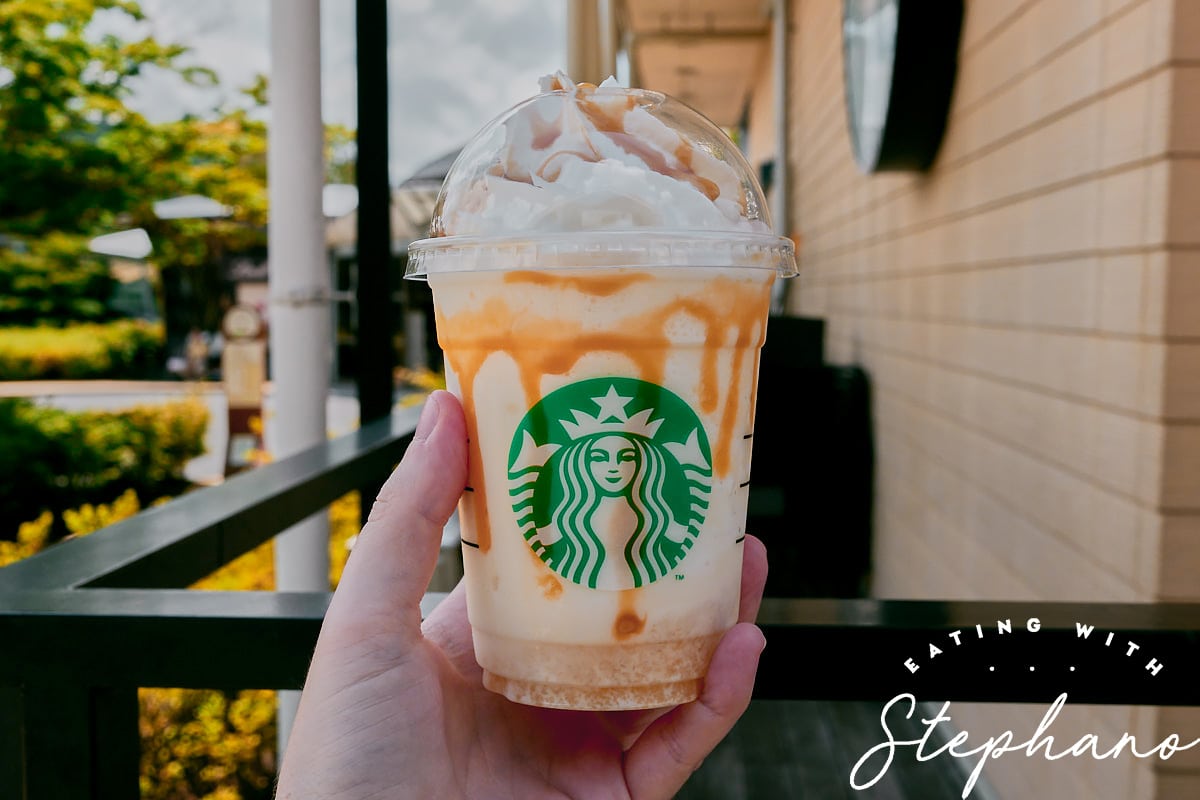
5. Gunma Yogurt Mango Frappuccino
Gunma’s Frappuccino was refreshing, enjoyable, and a bit overpriced. The concept was to celebrate Gunma’s dairy production with yogurt and highlight the color of renge tsutsuji variety of azalea with mango syrup. In the end, Starbucks Japan managed to crack the code on a mango lassi. When I had the drink, I thought it was good but the only difference between it and a mango lassi was that the drink was topped with whipped cream. A good flavor profile but nothing exciting. I would give it a 7/10 because the execution was good, but it was a mango lassi.
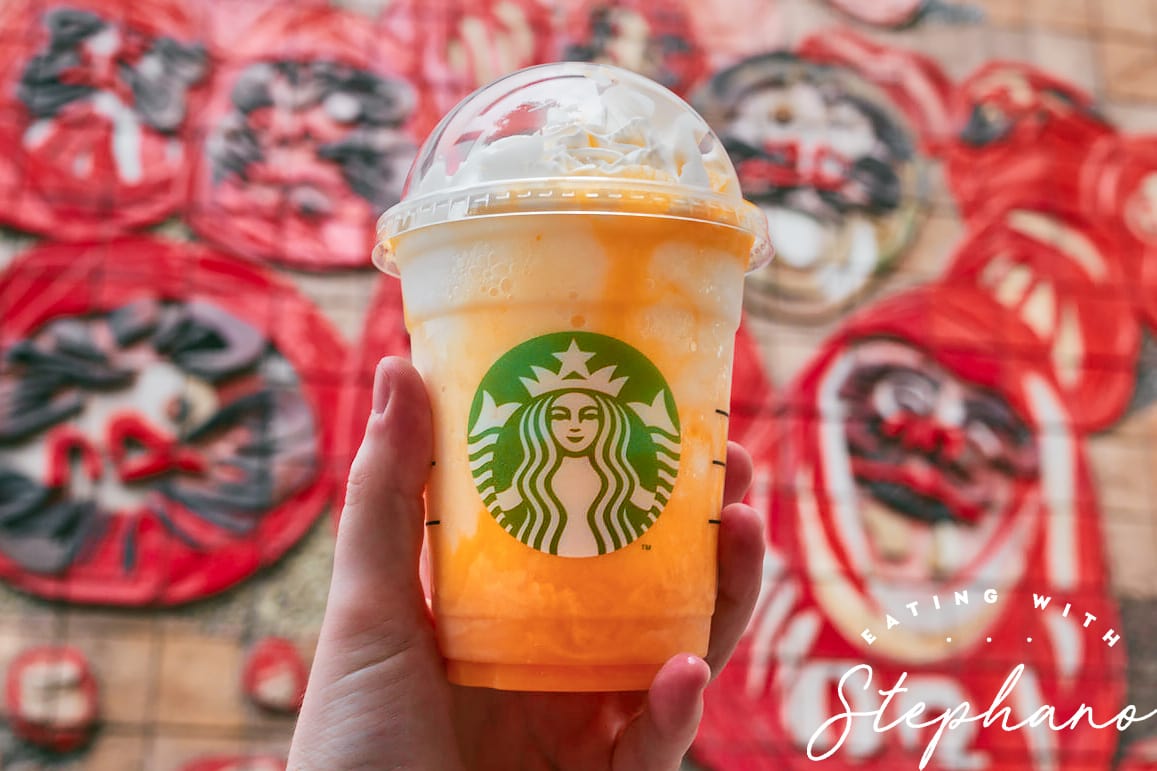
6. Yamanashi!! Grape and White Chocolate Cream Frappuccino
For a prefecture whose name literally means “mountain pear,” it was a bold move to instead feature grapes in their Frappuccino. This is because grapes and wine are famous in Yamanashi. If you visit you will find vineyards, grapes, and grape flavored foods for sale. Starbucks took this spirit and made a purple grape flavored Frappuccino. To make this Frappuccino, Starbucks used a vibrant purple grape flavored syrup and added it to a cream based Frappuccino. The biggest note on the flavoring is that this syrup tastes like typical artificial grape flavor, but not unbearably strong.
I like the concept of a grape flavored Frappuccino, but I’m not sure if this was the best possible execution of one. A lot of the grape sweets and omiyage you can find in Yamanashi tend to be a green grape. I think taking inspiration from more mature flavor would have added some class to the Frappuccino. This Frappuccino is basically a vanilla Frappuccino with some grape candy syrup. If you visit Yamanashi make sure to eat grapes, but make sure to get them local! I think that the concept of using grapes is not very inventive and the execution was poor, so I rate it a 2/10.
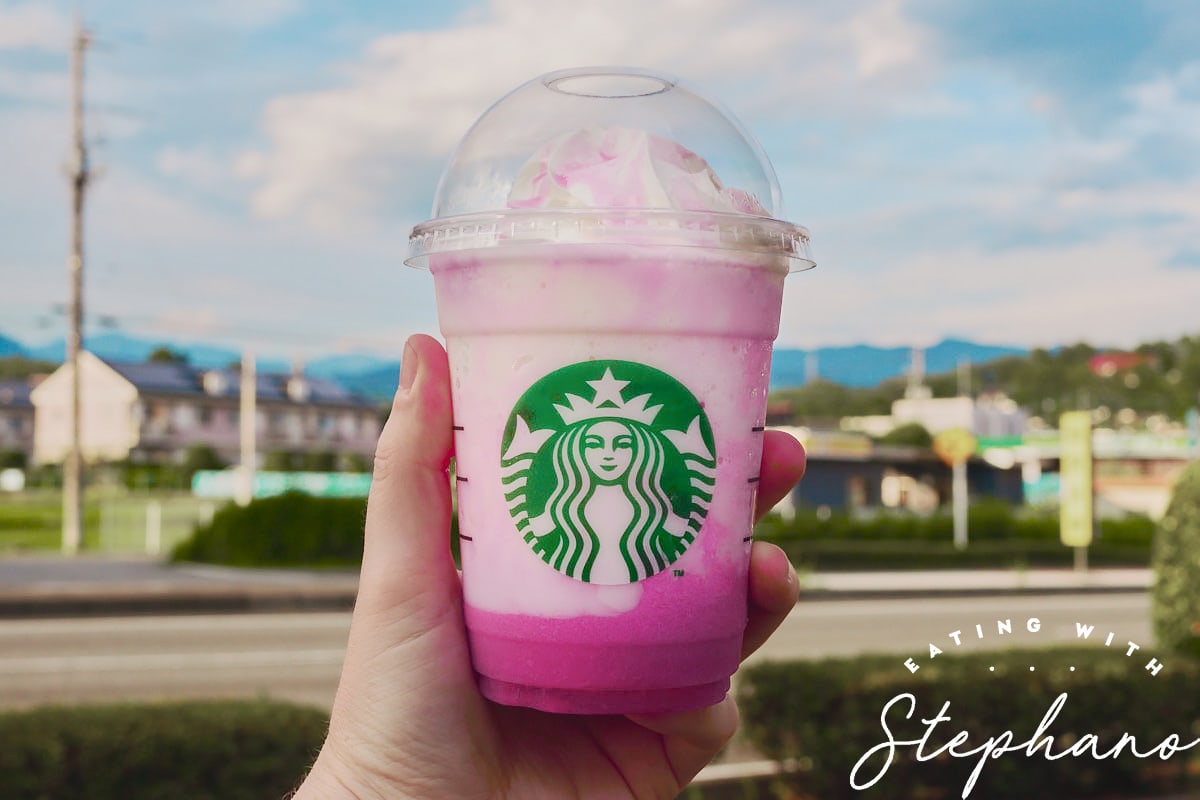
7. Tochigi Flashing Chocolate Frappuccino
While Tochigi is most famous for strawberries, with Starbucks all over Japan were offering a special strawberry Frappuccino, they went with a chocolate thunder and lightning theme. Tochigi is famous for having the most lightning strikes in Japan, which is not really a pull for tourists as much as it is potential for natural disaster. Basically, this concept is a weird flex, but ok.
This Rai-sama Frappuccino itself was great for chocolate lovers. It had a dark chocolate flavor and the topping is chocolate covered pop rocks that really bring in the thunder and lightning inspiration! I think that even though they were small touches, the chocolate covered pop rocks and the drizzle really bring the theme in. The drink felt bright and warm while getting that energy from the pop rocks. The only space for improvement is that I think they should have embraced the mango more and put more streaks of it down the side of the cup to really get that lightning and make it stand out against that dark chocolate. Because of the uniqueness of the inspiration, the incredible execution, and how fun it was to drink, I am giving it a 9.5/10.
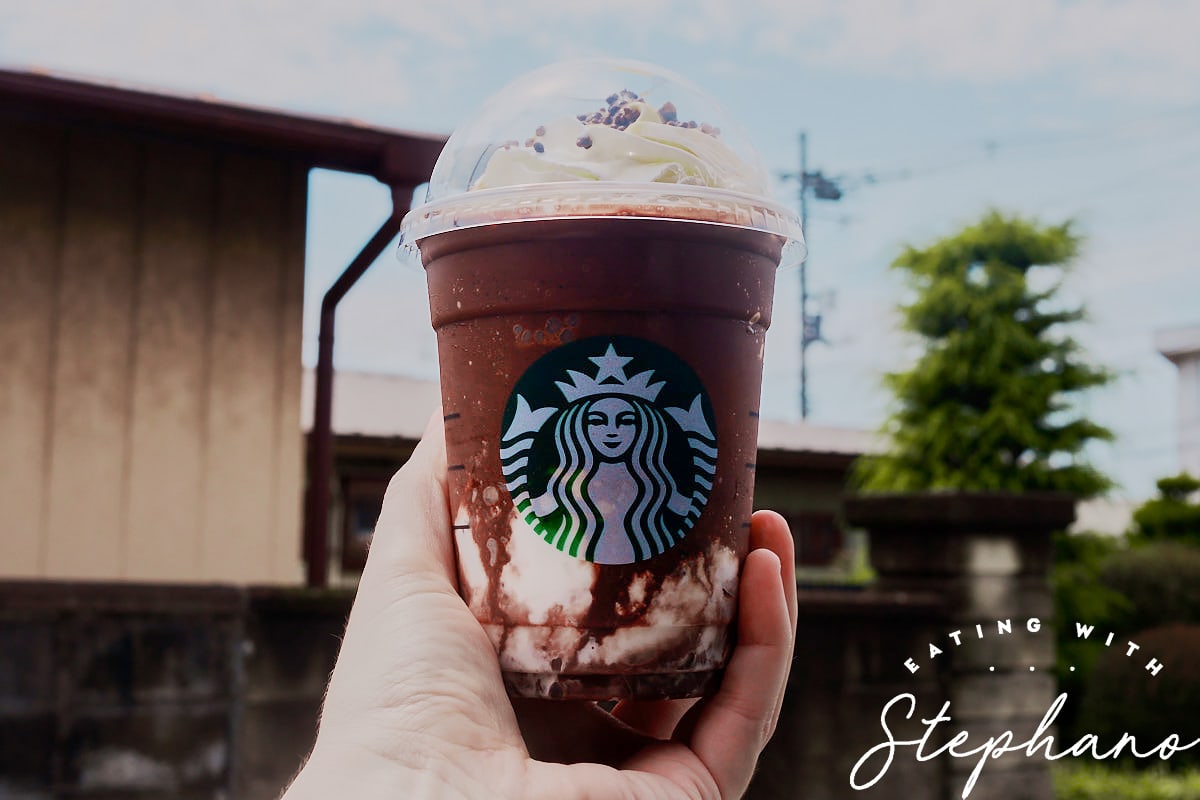
8. Chiba Mitarashi Coffee and Cream Frappuccino
To highlight Chiba’s soy sauce production, the Chiba Jimoto Frappuccino used a mitarashi dango sauce with the cream base. I really enjoyed these flavors! My only complaint was that I think they should have leaned into the saltiness more to really drive home their choice. This Frappuccino was pretty simple but good. 9/10.
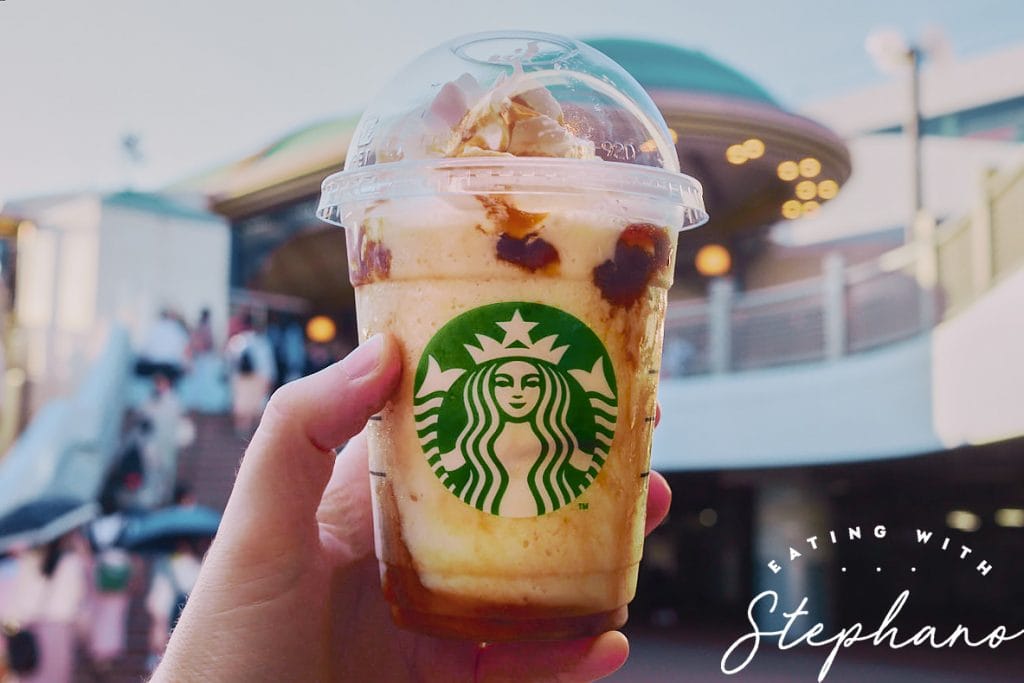
9. Hyogo Dark Chocolate Frappuccino
Hyogo Prefecture is home to the city of Kobe which is world-renowned for well-marbled beef. But within Japan, Kobe is known as being one of the most desirable places to live. Part of it is the easy access to the rest of Kansai, but a lot of it is based on the wonderful living conditions. Kobe is a historic international hub, previously home to various embassies. This international atmosphere remains in the city in the buildings and in its cafes. Kobe is home to many cafes, many of which prominently feature chocolate.
The Kobe chocolate Frappuccino is called an “adult chocolate” Frappuccino in Japanese. Using “adult” as an adjective is common for Japanese snacks. It typically means is that it’s more of a rich darker chocolate that is less sweet. When I took the first sip of this Frappuccino, I instantly loved it. The chocolate was rich and it wasn’t to sweet. The chocolate shavings gave it a nice texture. This was just a very good Frappuccino. Conceptually it’s kind of basic, but the execution of this drink was excellent. It reminded me of what I imagine those fancy Godiva drinks to taste like. I don’t know if this the best representation of Hyogo prefecture and their historic cafe culture but for the excellent execution and easy drinkability, this drink receives a 9.5/10.
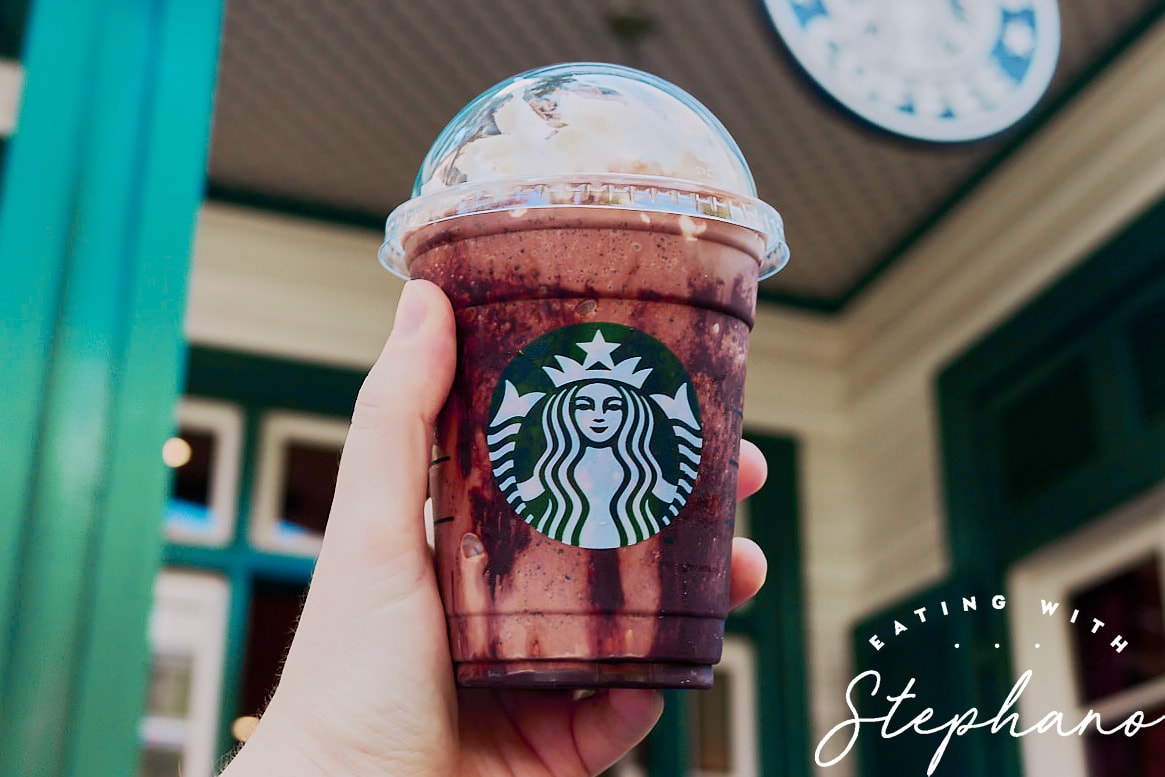
10. Osaka a Lot of Fruits Cream Frappuccino
Japan is famously selective with fruit. That’s why you’ll see jaw dropping videos about $20,000 grapes and commonly see $8 packs of 12 tiny strawberries. While the luxury fruit industry hasn’t always been around, supermarkets always reject blemished fruits. This practice is incredibly common all over the world, where visibly imperfect fruits and vegetables are frequently thrown out or simply picked off the trees and left on the ground. In post-war Japan, there were food shortages but supermarkets didn’t want to sell the blemished fruits. Osaka created Mixed Fruit Juice as a way of using those blemished fruits. It’s now a feature of gourmet culture in Osaka and commonly found in tourism guidebooks. To capture this spirit, Starbucks incorporated various fruit juices to make their own mixed fruit Frappuccino.
This drink turned out to basically be a fruit smoothie. I appreciate Starbucks using this local treat as the Osaka selection, because it was something I had never heard of. Most English language media I have read about Osaka talks a lot about takoyaki, okonomiyaki, and kushikatsu, but nothing on mixed juice. I had not heard of mixed juice before Starbucks released this Frappuccino.
The Starbucks version tasted overwhelmingly of mango. The chocolate drizzle did not add anything to the overall enjoyment. It wasn’t that original either since Starbucks Japan already has a mango Frappuccino on their permanent menu. This drink’s taste was not that creative and lacked some points in execution, but it did teach me something about Osaka that I didn’t know before. For that, I’m giving it a 7/10.

11. Nara Hojicha White Chocolate Frappuccino
Like Kyoto, Nara is famous for temples and tea. For Nara’s drink, Starbucks Japan used a white chocolate and hojicha Frappuccino. Hojicha is a type of roasted green tea that has a more earthy flavor than matcha or other green teas. I found this Frappuccino to be utterly delicious. It had a perfect balance of earthiness and sweetness that you would want from a Frappuccino and it was very drinkable on a hot summer day. This drink was not particularly creative, but it was perfectly executed. I would gladly drink this again. This drink deserves a 9.5/10.
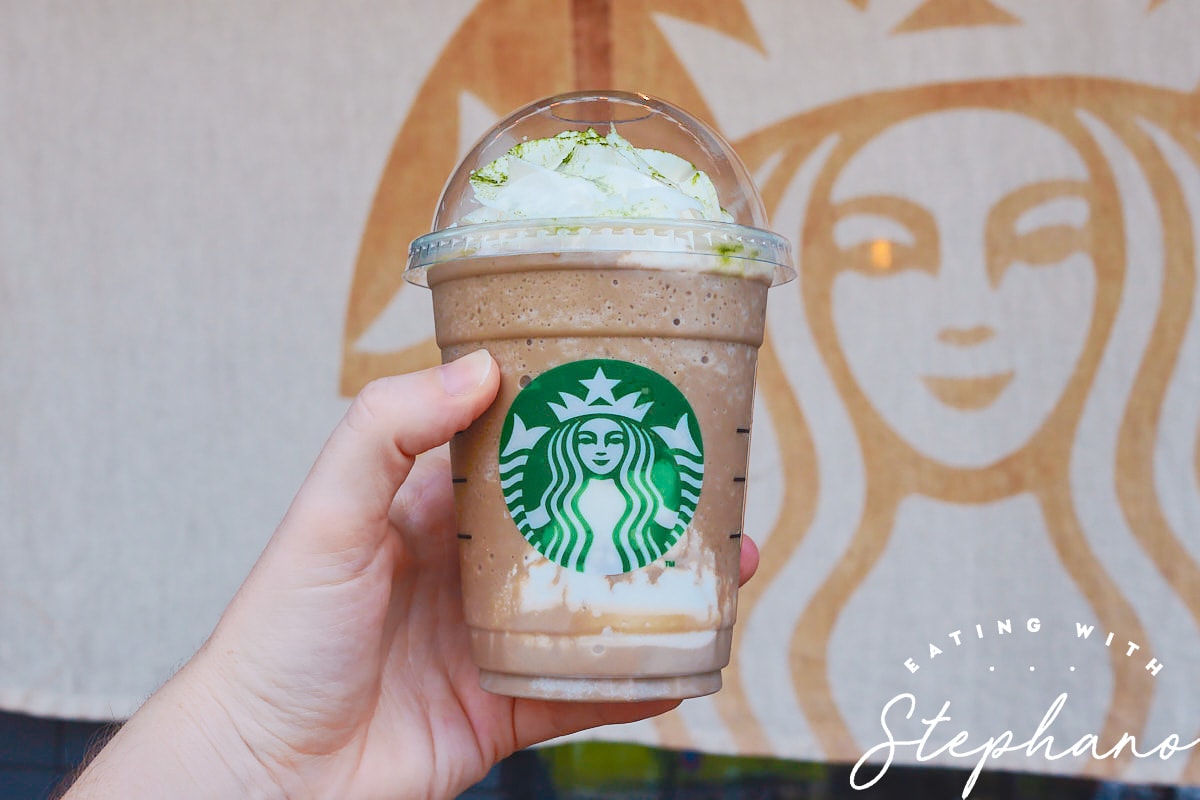
12. Kyoto Matcha Kinako Frappuccino
If you like matcha, Kyoto is the place to be. Matcha sweets and treats can be found all over this famous historic city, so much so that you can purchase matcha guidebooks just for Kyoto’s restaurants, cafes, and tea rooms. Uji, Kyoto is home to the most famous matcha in Japan. So, it was a no-brainer to make a matcha drink. That being said, in a city that is full of matcha sweets and treats, what can you do to make your drink stand out? Starbucks decided to put extra whipped cream at the bottom and add a dusting of kinako (roasted soybean powder). While this was a great way to highlight Kyoto as the matcha capital, it also brought in the use of soybeans that you’ll commonly see in tofu, yuba, soy milk, and soy based foods around Kyoto.
While I think this is a basic drink. Matcha and kinako are an extremely safe and common combination. While it’s basic, I think that this was the right choice. These flavor combinations are only in the cultural zeitgeist today because of the impact they have had on Kyoto’s cuisine and Kyoto’s effect on global cuisine. That being said it’s still just a perfectly executed matcha and kinako Frappuccino. They could have leaned little more into the kinako. While it’s not an earth shattering concept, it’s still extremely tasty and extremely relevant to the prefecture it represented, so it receives a 9.5/10.

13. Shiga Biwa Blue Citrus Cream Frappuccino
Shiga’s Frappuccino did not feature an iconic part of Shiga’s cuisine, but instead painted an image of the sun over Lake Biwa, Japan’s largest lake. This drink was made with butterfly pea tea syrup, citrus jam, matcha powder, and a vanilla bean base. Butterfly pea tea is famous for it’s beautiful blue color, but does not provide much flavor alone. The citrus jam sat on top of the drink, so it was mostly just a vanilla bean Frappuccino with some citrus in it.
I went to Shiga for the first time to try this drink. My impression of the drink and Shiga are both kind of the same; it was a fine experience. I was not really able to see the lake and maybe that would have changed my impression of the drink, but I thought it was just ok. Nothing stunning, but just ok. I didn’t find the drink particularly inspirational or informative about the prefecture. I already knew Shiga had a lake and I’ve tasted vanilla bean Frappuccinos before, so I am giving it a 6/10.

14. Gifu Matcha and Coffee Jelly Frappuccino
Gifu made their Frappuccino to remind people of the beautiful mountains and inspire people to come to Gifu for camping and barbecue. I hate to say it, but this one completely missed the mark. This drink combined matcha, chocolate java chips, and coffee jelly all into one drink. Matcha and chocolate are a good flavor combo because they both enhance the other, but combined together with coffee jelly made it a three-way flavor power struggle and one had to lose out; this time it was the coffee jelly.
One of the reasons why the coffee jelly did not work here was because in an ice cold drink, it’s hard to pick up on subtle flavors. The stronger and more present flavors were the matcha and chocolate java chips. This drink tasted fine.
Even though you could not taste all of the components, I think it missed the mark for inspiring me to enjoy Gifu’s nature or have a barbecue. I liked the theme for Gifu, but I think a different execution could have really helped get the concept across. You couldn’t really taste everything and the theme didn’t fulfill its stated purpose, but overall it still tasted fine, I rated it a 5/10.
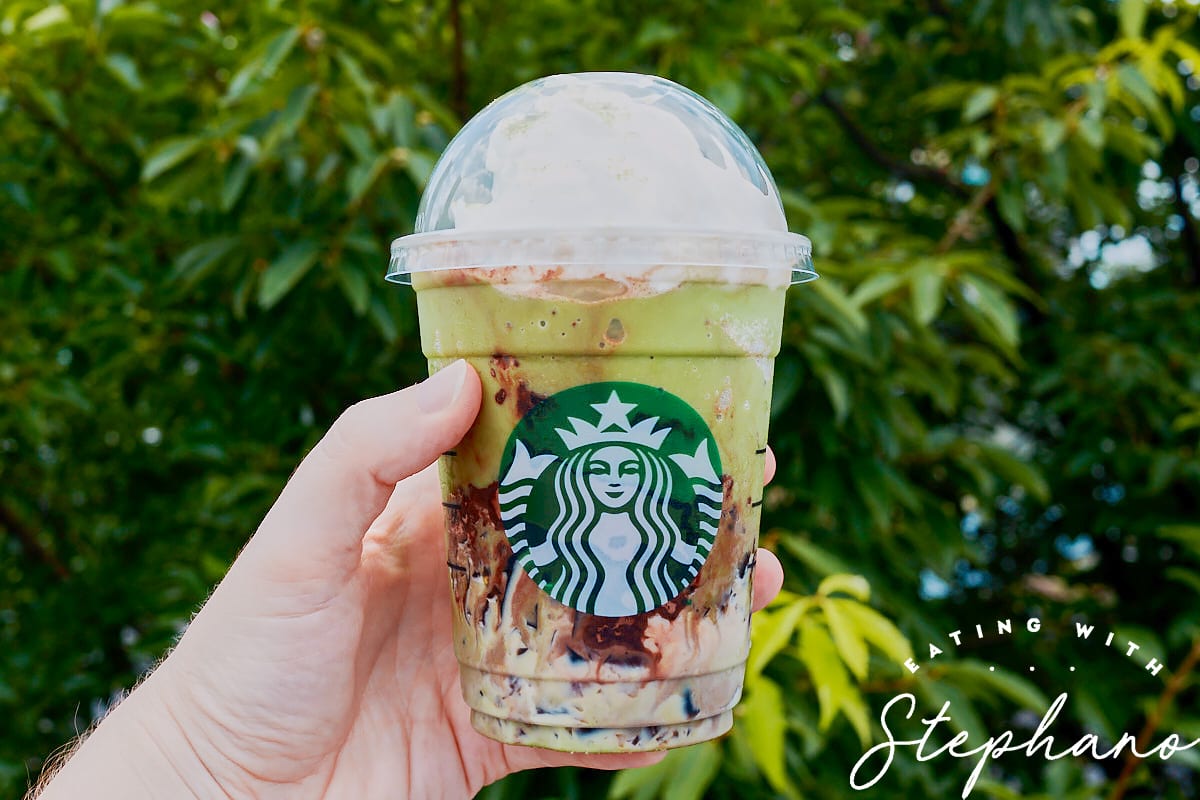
15. Aichi Anko Coffee Frappuccino
Aichi prefecture is home to the beautiful wonderful city of Nagoya. Nagoya’s coffee culture completely revolutionized the kissaten scene all over Japan. The city’s signature dish is ogura toast. Ogura toast is sweet red beans, typically with butter, served on toast. There are other ways to spice up this classic Nagoya dish; common variants include adding whipped cream and fruit jams. The Nagoya Frappuccino highlighted this local food beautifully.
The drink itself uses both whipped cream and red bean sauce, and I think some bits of chocolate with a cream base. I think they were being cautious with the red bean flavor because some people don’t like red bean, but I think it really came across as a red bean Frappuccino. Incorporating the cream that sometimes tops Ogura toast was genius, really driving home that this was an ogura toast Frappuccino. Red bean can sometimes taste like chocolate, so I’m not sure if there was java chips in this or not but either way, this was a successful incorporation of a local delicious into a Frappuccino. Because of how successfully Starbucks represented this globally underrepresented part of Nagoya’s cuisine and that it was a thrill to drink, this Frap deserves a 9/10.
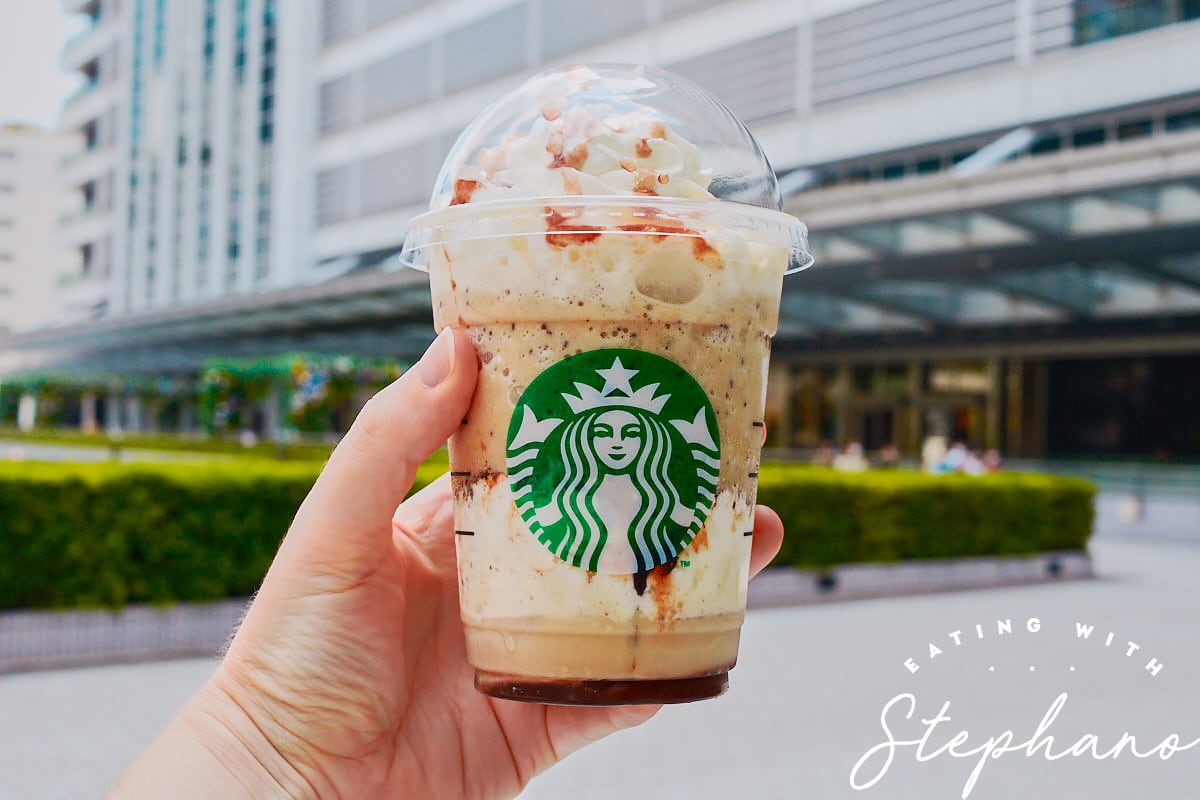
16. Shizuoka Mikan Citrus Frappuccino
The concept behind Shizuoka’s Frappuccino was Mount Fuji’s awe-inspiring presence and warmth. To do this, they made a white chocolate drink with a mandarin orange jam/syrup topped with matcha powder. The drink itself was very orange, but not overly sour. Conceptually I don’t hate it, but I think that this drink was a missed opportunity for Shizuoka. Shizuoka is a famous producer of green tea in Japan and this would have been an excellent time to use tea for the drink. If they wanted to highlight Mount Fuji, then this would have been the perfect time to make a dark blue butterfly pea tea drink and topped it with snow like whipped cream. Overall this flavor profile seems like a pretty strange fit and the drink was not very awe-inspiring. I think that the execution was fine, but the concept could have been better. It gets a 6/10.
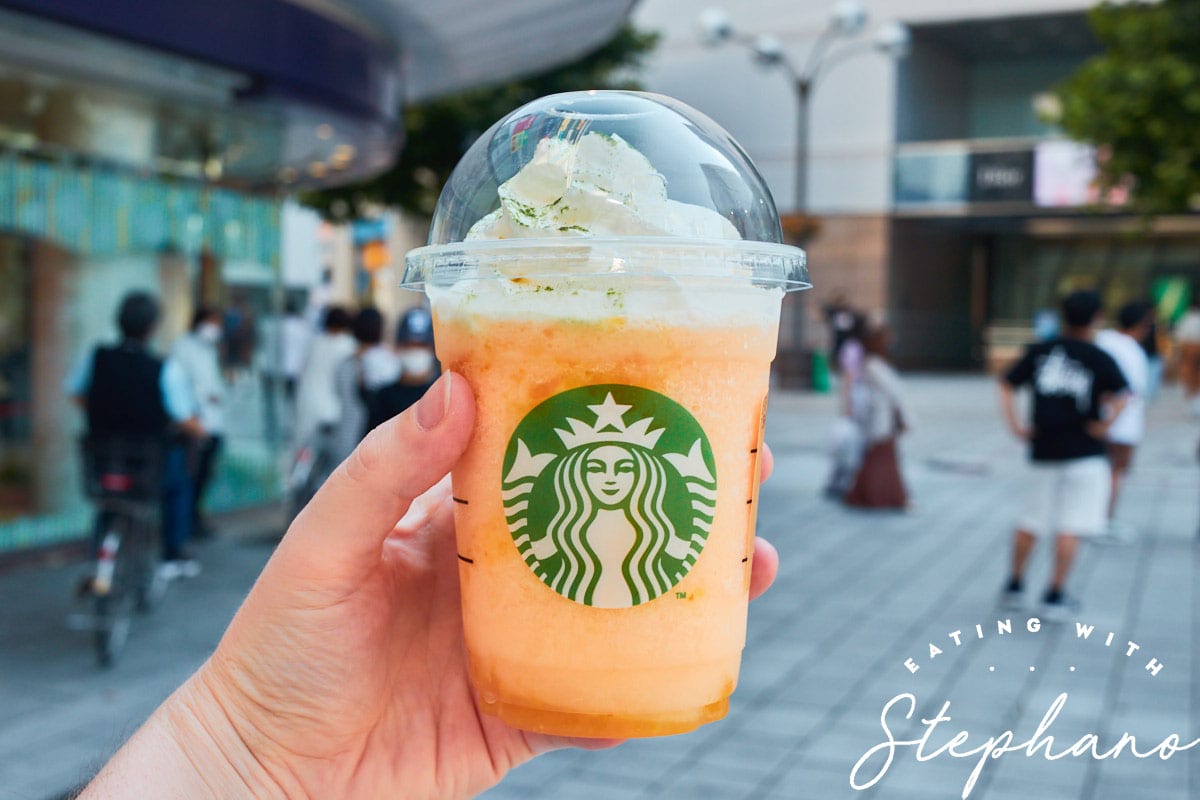
How much did I spend on this Jimoto Journey?
Here’s the math for my Jimoto journey. In total, I drank 16 Starbucks Frappuccinos; each of them costing 669 yen (~$6). I spent 10,035 yen (~$90) on 15 Frappuccinos. I got a Frappuccino for free since a friend used Starbucks rewards and gave it to me. My total train fare costed approximately 13,400 yen (~$120) because I used combinations of days on the Tokyo Wide Pass, Seishun 18 ticket, and my commuter pass to access these places. I also stayed some nights in Kyoto when traveling in the Kansai region. That added in an additional 4,000 yen (~$36) on hotels. For this entire little project, I spent about 27,435 yen (~$247) trying to drink every Jimoto Frappuccino.
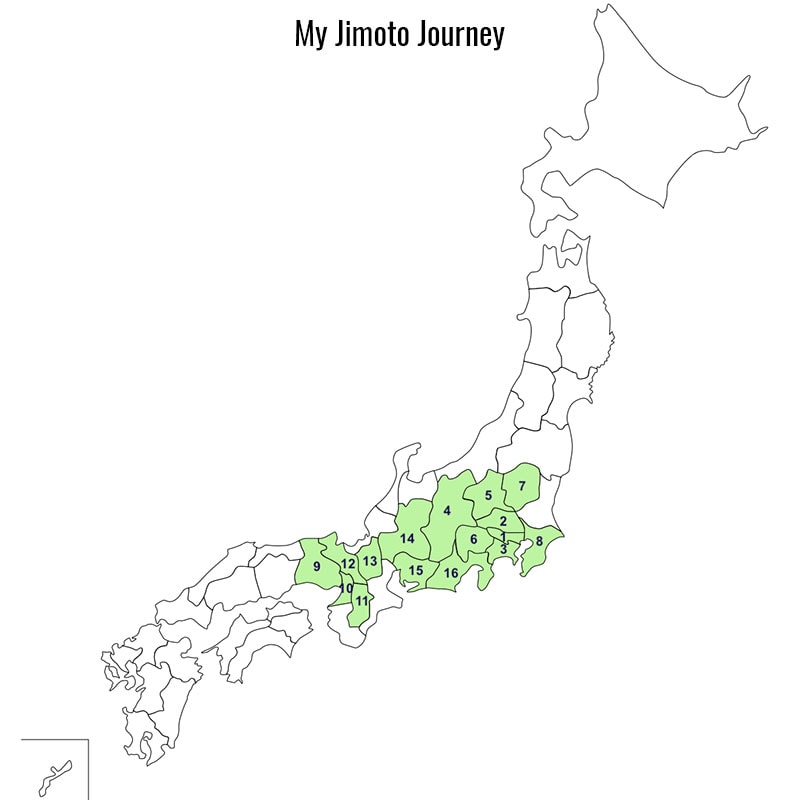
When I had started doing the math and scheduling to see how many I could fit in, I actually felt a little depressed at how easy it would have been to go to some of these places just for a Starbucks drink. Overall, I’ve already traveled in 35 of the 47 prefectures. I want to go to the other prefectures, but the idea of just grabbing a Starbucks drink and leaving was depressing. It was fine to do that for places I’ve been to before, but for new places, it did not feel right.
I also had realized that if I had been really committed to drinking as many as possible, I could have grabbed and gone on most of the drinks in the Chugoku region, and maybe even Kyuushu as well, but something about drinking nothing but Starbucks on my only 4 day vacation until Christmas was really upsetting.
For my mental health, I limited how much I pushed myself to get these drinks. I did have a few days where I ended up drinking 4 Frappuccinos since I used the Seishun 18 Ticket or the Tokyo Wide Pass. With these train passes, you can easily just hop off wherever you want and hope back on the next train for no additional costs.
Final Thoughts
Most of these drinks are not super original, but riffs on existing drinks. A lot of Frappuccinos follow the similar formulas and just make adjustments for flavor. Out of the ones I tried, Aichi’s Ogura Toast inspired drink really caught my eye as something more original.
I was able to reach 16 different prefectures and try 16 different drinks. Some of them were obviously much better than others. I think the Tokyo Frappuccino was good but boring. My favorites were probably Tochigi, Hyogo, Nara, and Kyoto. A lot of them were solid drinks that could survive as normal menu items at Starbucks; especially that Hyogo drink, though I suspect the Hyogo drink was just a riff on the Java Chip Frappuccino.
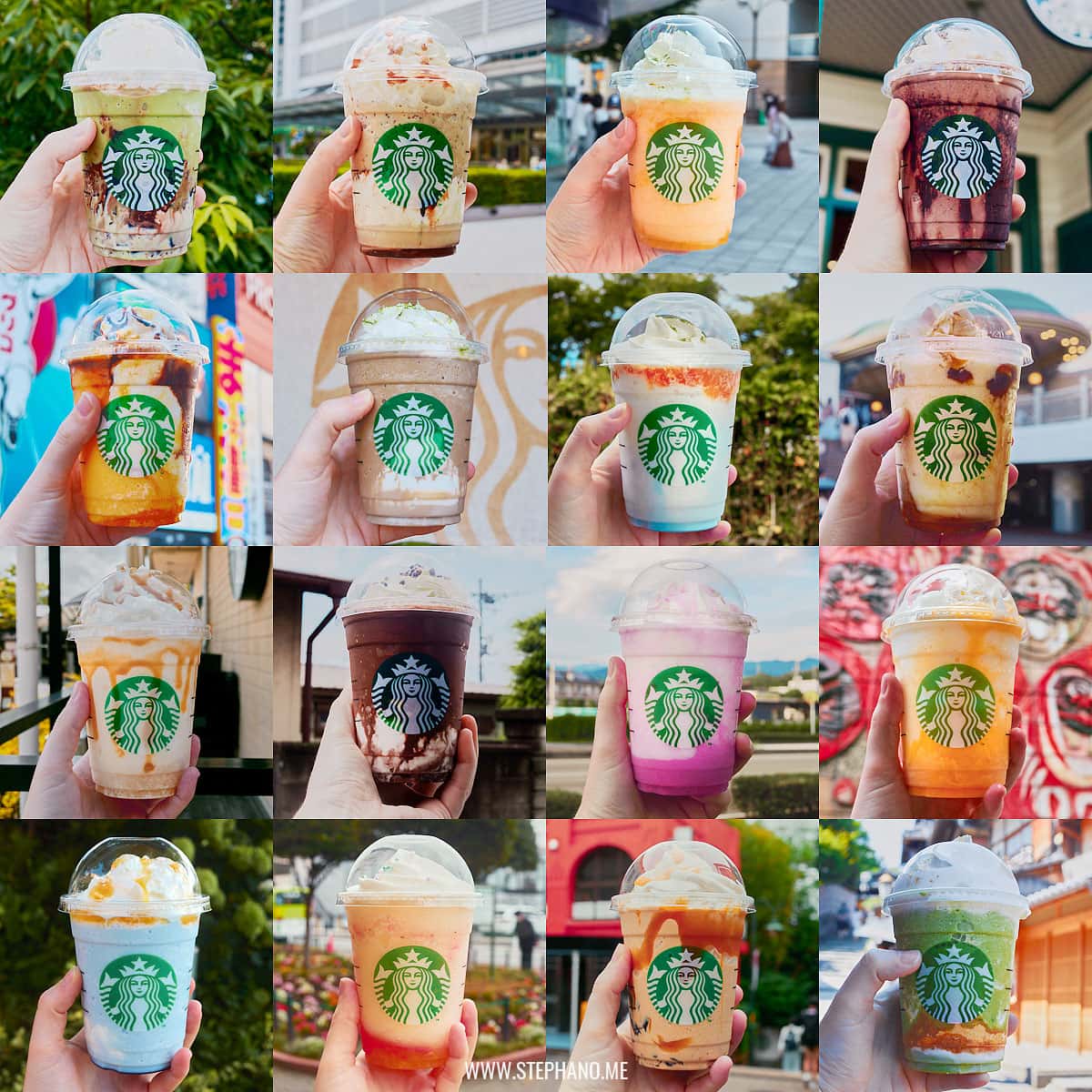
Some of the drinks I really wished, but couldn’t make it to were the Hokkaido Creamy Corn Frappuccino, Miyagi’s Zunda Matcha Frappuccino, Akita Salted Caramel Frappuccino, Ibaraki Melon Creamy Frappuccino, Beautiful Niigata Kaki no Tane Chocolate Frappuccino, Ishikawa Hojicha Frappuccino, Fukui Puffed Rice Frappuccino, Tottori Creamy Caramel Frappuccino, Yamaguchi Sesame Matcha Frappuccino, Oita Exciting Kabosu Citrus Tea Frappuccino, Miyazaki Sparkling Hyuganatsu Frappuccino, and Okinawa Chinsuko Vanilla Caramel Frappuccino. The most interesting ones seemed to be in hard to reach prefectures.
I hope Starbucks Japan will do something like this again! I also hope that the next time they do it will last longer than a month. Regional specialty foods are common in Japan, so it’s nice to see a big chain making them accessible to a large audience! I hope that the Jimoto Frappuccinos have taught everyone a little more about Japan.
